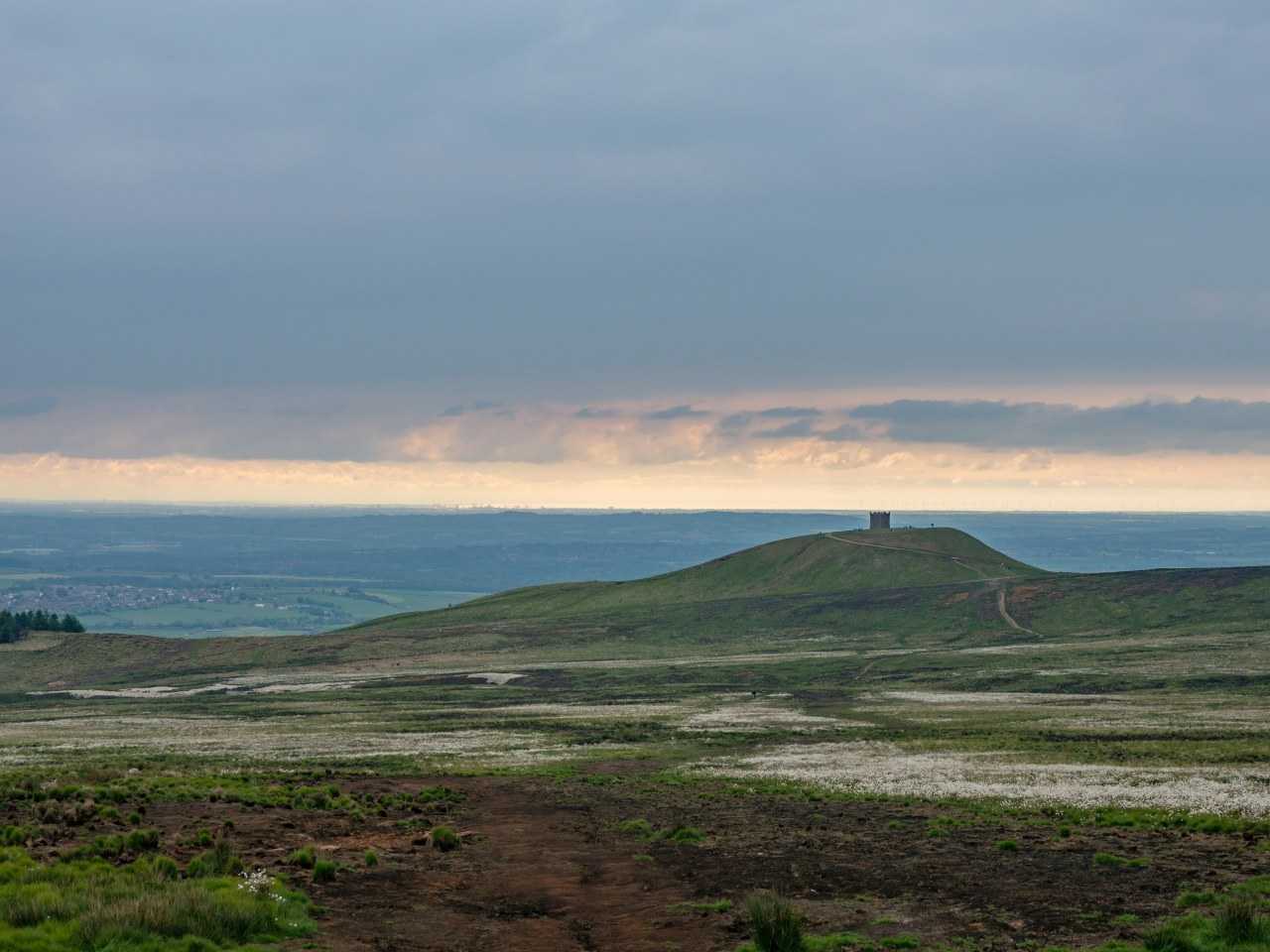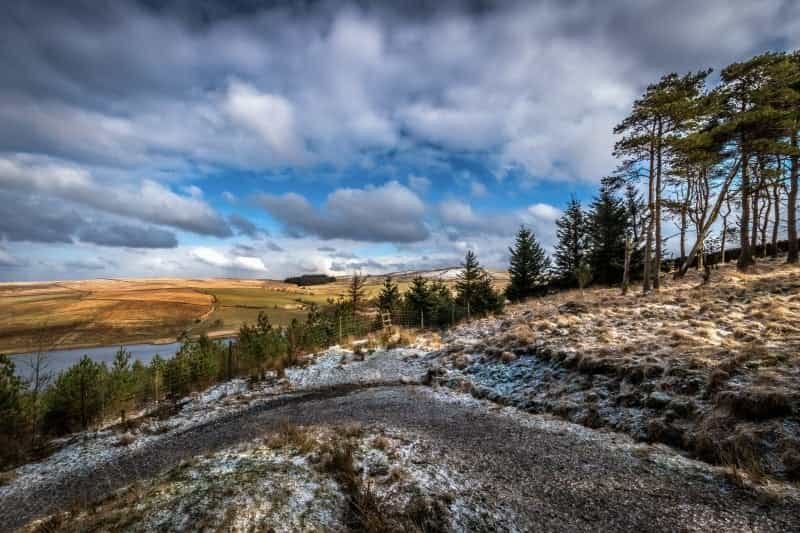The Best Places To Walk In Lancashire
Staying in the red rose county and looking for the best places to walk in Lancashire? As this part of the North West is better known for its industrial heritage and is located between the Lake District, Yorkshire Dales and the Peak District, it is sometimes overlooked as a walking destination.
Yet there’s an abundance of top trails in this part of the world, and this guide to the best places to walk in Lancashire brings together some of our tried and tested favourites. Explore the contrasting countryside with routes that vary from coastal paths to woodland ways, historic trails and moorland routes. A ramble in the fresh air is a relaxing way to unwind after exploring the rest of the best things to do in Lancashire.

Hoghton Tower trails
Near Blackburn, Hoghton Tower is a fortified manor house with lots of trails to follow through its grounds and out into the wider countryside. You can walk all the way around Hoghton Tower on surfaced footpaths and pass country cottages that make up one of the oldest estate villages in Britain. Longer walks can be followed through the 80 acres of parkland and on to Hoghton Bottoms, a tiny hamlet with a pub from which you can follow woodland trails and routes along the river Darwen.
Planning a trip? Take a look at the best campsites in Lancashire – and if you’re new to pitching up, take a look at our complete guide to camping in the North West of England.
Trough of Bowland
The Trough of Bowland is a valley and high pass within the wider Forest of Bowland. Though remote, the area is easily accessible from the M6 that marks its western boundary. There’s a walking outing for all in this scenic tract of dense forest, peat moorland and gritstone fells. Hiking highlights are the 300-metre high pass where the Pendle witches were led to their trial in Lancaster from Pendle Hill, plus Nicky Nook fell, Beacon Fell Country Park, and the Crook O’ Lune beauty spot.
Popular start and end points for the many walking routes in the Trough of Bowland include Hornby with its castle, Dunsop Bridge where the Queen enjoyed her first-ever pub lunch in 2006, Slaidburn near Stocks Reservoir and Hurst Green, where you can walk the Tolkien Trail in the landscape that inspired ‘The Lord of the Rings’.
Write your own holiday story at a campsite near Lancaster

Rowley Lake and Brun Valley Forest Park
Rowley Lake is actually a man-made body of water with a dam and weir – but you wouldn’t think so today, as nature has reclaimed this once barren landscape. A more peaceful spot would be hard to find near the post-industrial landscape of Burnley.
The seven-acre lake is now part of the Brun Valley Forest Park and is surrounded by lush greenery and towering trees. A loop around the water is easily accessible on the well-maintained paths, or you can veer off along the banks of the Brun through woodlands that extend all the way to Gorpley Moor.
Book a break at campsites near Burnley for easy access to Rowley Lake
The Lancashire coast
The Lancashire coast stretches from Merseyside to Cumbria, with seaside resorts and sandy beaches to visit (click here for a rundown of the best beaches in Lancashire). Walk by saltmarshes, rolling countryside and river estuaries, all bounded by the foothills of the Pennines and the Irish Sea. There are coastal settlements famed for their shrimp hauls as well as Victorian piers and of course Blackpool, which needs no introduction. The area is also home to a number of ancient shipbuilding towns with links to a darker past, as this part of the coast also played a part in the transatlantic slave trade.
The Lancashire Coastal Way runs along the county’s entire seaboard and can be walked in several stages. A walk between Cark and Flookburgh is a popular way to take in Morecambe Bay. The section between Middleton Sands and Sunderland Point has an ‘end of the world’ feel as you cross the causeway to reach the cut off village. Here you’ll find Sambo’s Grave, the burial site of a cabin boy presumed to have been a slave.
A route along the coast at Lytham St Annes passes the world-renowned golf course and Lytham Windmill. Alternatively, try walks stopping off at Grange-over-Sands and Blackpool for contrasting days out at the seaside.
Combine a walking holiday with traditional seaside vibes at these campsites in Blackpool

Johnson Hillock Locks
Towpath walks are always a breeze because they’re so flat, plus you get to watch the narrowboats gliding by – and there’s often a waterside pub or café for refreshments. That’s true of Johnson Hillock Locks, a series of seven sluices near Chorley that raises the waterway by 66 feet, where you can start and end a walk at the Top Lock pub. The inn sits just off the bridge that carries the road through Wheelton over the canal. A stroll along the towpath to Withnell Fold, a model garden village where once there was a paper mill, adds a touch of Victorian history to your day out.
Plan a Lancashire camping holiday at campsites near Chorley
The West Pennine Moors
The West Pennine Moors sit above Lancashire and Greater Manchester with 90 square miles of wild countryside, fells and reservoirs. Walking this lofty expanse, you’ll have views to the Lake District and to the coast beyond, with the sprawl of historic Lancashire towns down below. The best way to see the West Pennine Moors is with hiking boots, a picnic and a good map. There are dozens of long walks to take, shorter routes to stroll, and the 15-mile West Pennine Moors walk that links to the Pennine Way.
Hiking high points include the Darwen Tower, completed in 1898 to commemorate Queen Victoria’s Diamond Jubilee. There is a staircase inside the 86-feet sandstone lookout to a viewing platform with vistas of Snowdonia, the Irish Sea and even the Isle of Man on a clear day. There are peaks to scale at Rivington Pike with its tower and terraced gardens, the summit of Great Hill and Winter Hill, with views of four National Parks: the Lake District, the Yorkshire Dales, the Peak District and Snowdonia.
The Ribble Valley
For a serious uphill hike, a saunter through villages from a bygone era or a ramble along the riverbanks, the Ribble Valley is one of the best places in Lancashire for a countryside day out in. The area is also a right of passage for Harry Potter fans, with its impressive viaduct on the route between Platform 9¾ and Hogwarts.
The Ribble Valley Sculpture Trail runs through a mile and a half of woodland and open grassy meadows with 22 artworks dotted along the way. Spot otters, kingfishers, herons and bats on this trail that skirts the banks of the Ribble. For a longer hike, the Ribble Way extends over 70 miles from Preston to the river’s source at Gayle Moor in Yorkshire. The route follows a gentle course through Ribchester and Clitheroe before reaching Gisburne and up over the fells as it crosses from Lancashire, the land of the red rose, into Yorkshire, associated with the white rose of York.
For walking routes with interesting stop-offs, a visit to Clitheroe Castle in the capital of the Ribble Valley is a must, as is the Roman centre of Ribchester, the dreamy village of Downham (where overhead wires and road markings are banned), and the landscape where Henry VIII wreaked havoc on the abbeys at Sawley and Whalley.
Explore the Ribble Way from a campsite near Preston
Fairy Glen
Fairy Glen is a woodland vale on the side of Parbold Hill that rises above the countryside north of Wigan. The valley was created by the Sprodley Brook that continuously eroded sandstone layers and created a series of waterfalls. There is a tree-shaded footpath through Fairy Glen with cliff edges, stepping stones and fallen trees – a landscape where it’s easy to imagine imps and sprites making their home. Longer walking trails lead off in various directions, including to the top of Boar’s Hill where there are views of the Cumberland Hills, the peaks above the Forest of Bowland and faint sights of the Welsh Mountains across the Mersey Estuary.
Ready for an urban day out, historic attractions and industrial heritage? Then head to these top Lancashire towns, where there’s lots more to see, do and discover.